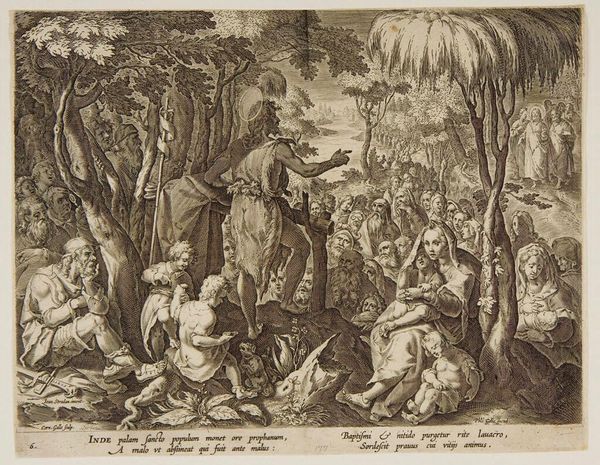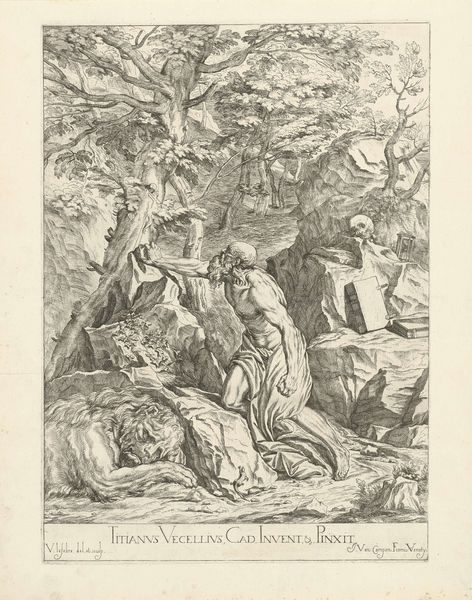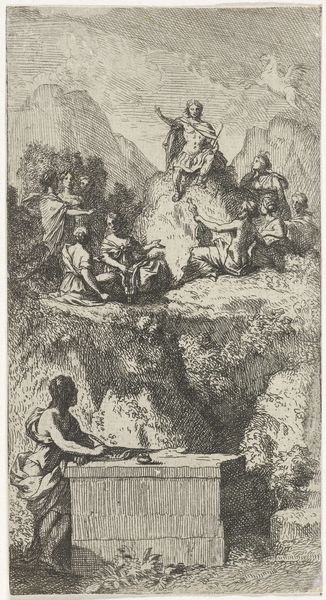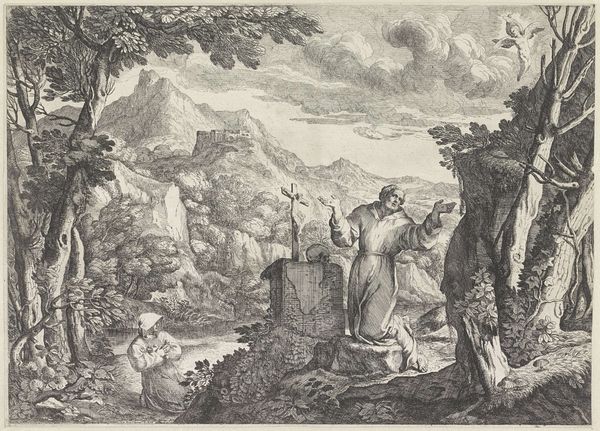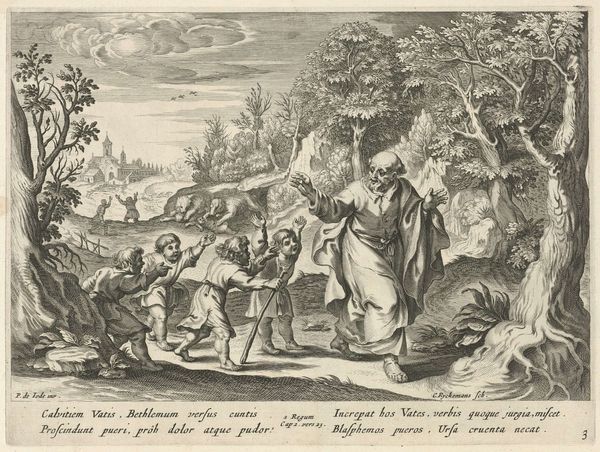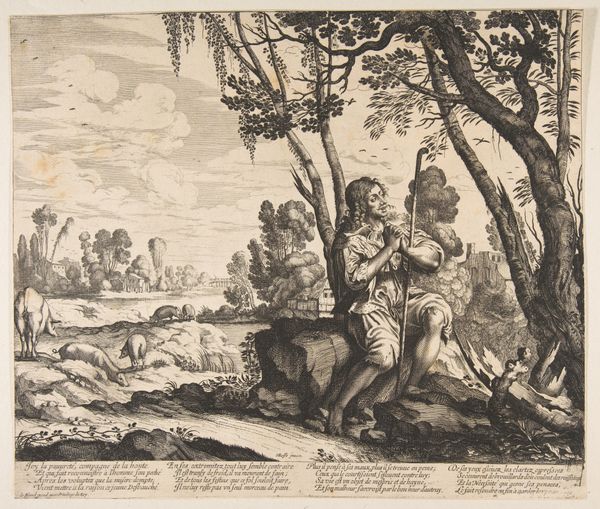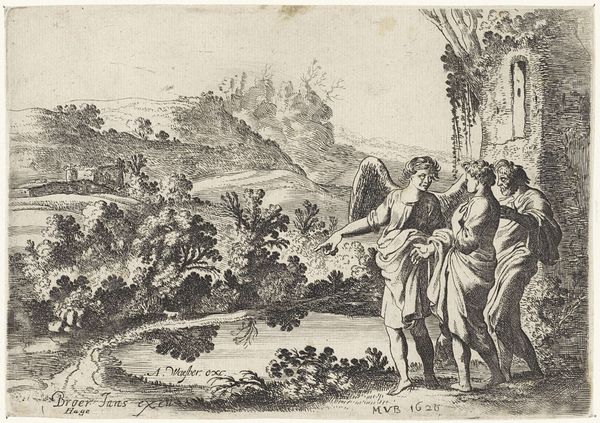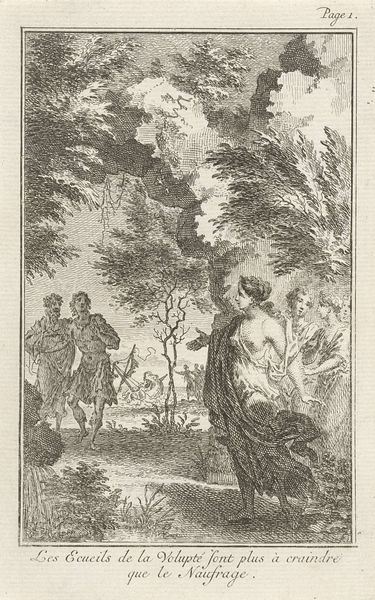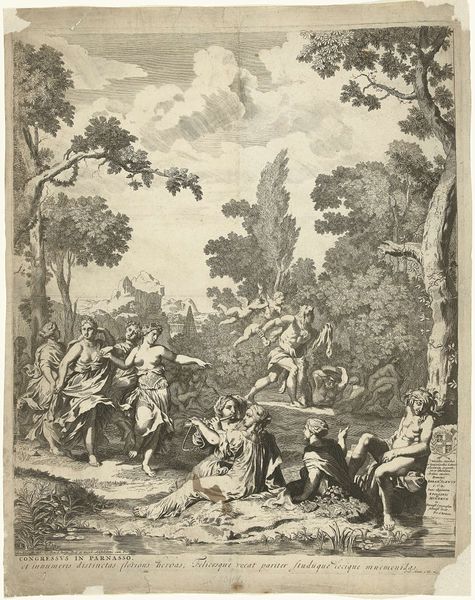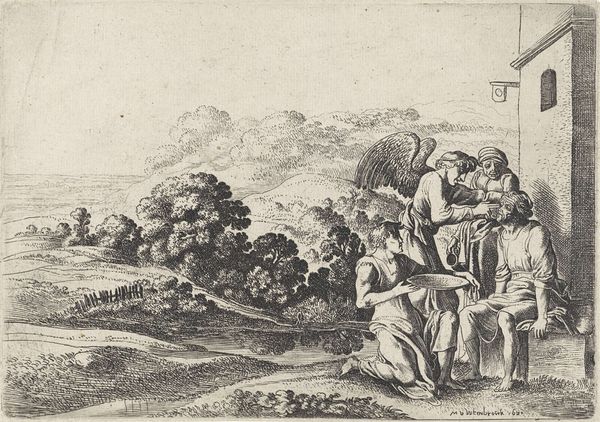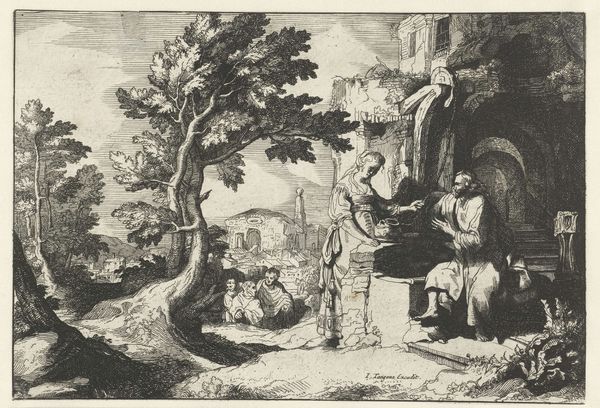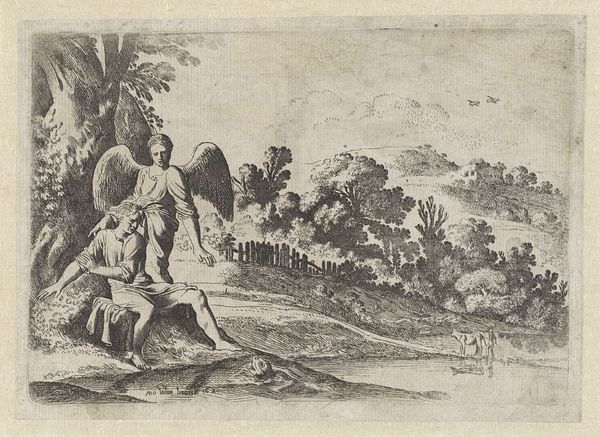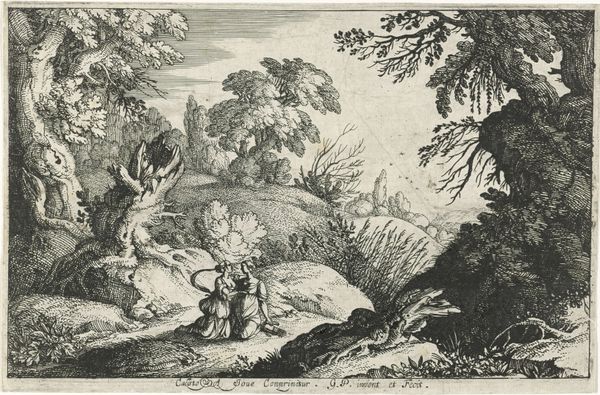
print, etching
#
baroque
# print
#
etching
#
landscape
#
figuration
#
history-painting
Dimensions: 173 mm (height) x 185 mm (width) (plademaal)
Editor: This is Jan van Ossenbeeck's etching, "Flugten til Egypten," created sometime between 1654 and 1660. It depicts the Flight into Egypt. It has such an intense, almost overwhelming, quality. What strikes you when you look at this print? Curator: Well, first it's important to acknowledge the period; we are firmly rooted in the Baroque, a time of significant religious and political upheaval. Etchings like these played a crucial role in disseminating religious narratives, essentially shaping public perception and reinforcing established doctrines. The story of fleeing to Egypt becomes a political symbol for Catholics during Protestant ascendance. Note how landscape becomes such a key theme, especially in times of shifting social orders. What kind of social context can you gather from that imagery? Editor: That's a fascinating perspective. So the choice of emphasizing the landscape around the figures might be less about aesthetic beauty and more about… framing a historical event? I wouldn’t have expected that. Curator: Precisely! Look closely at how Ossenbeeck employs light and shadow. Notice that this contrast isn't just for dramatic effect; it emphasizes certain figures, elevating the holy family, guiding the viewer to understand. Can you see any social dynamics at work? How would the everyday viewer receive such heavy symbolysm and visual encoding of hierarchy? Editor: Now that you mention it, the light does highlight Mary and baby Jesus. So, is it about reinforcing the power of the church and portraying it as a source of refuge? Is the journey a kind of symbolic branding, imprinting a specific message onto the viewer? Curator: Exactly! It's about controlling the narrative through visual means. Art served as a powerful tool for political agenda back then. Did you consider art's institutional framework at the time, what messages it was producing and re-producing? Editor: I hadn't thought about it like that before. It really sheds new light on this work, seeing it not just as a depiction of a biblical scene, but as a visual representation of the Church's social and political positioning. Thank you. Curator: My pleasure. Now we can delve into how those themes persisted!
Comments
No comments
Be the first to comment and join the conversation on the ultimate creative platform.
